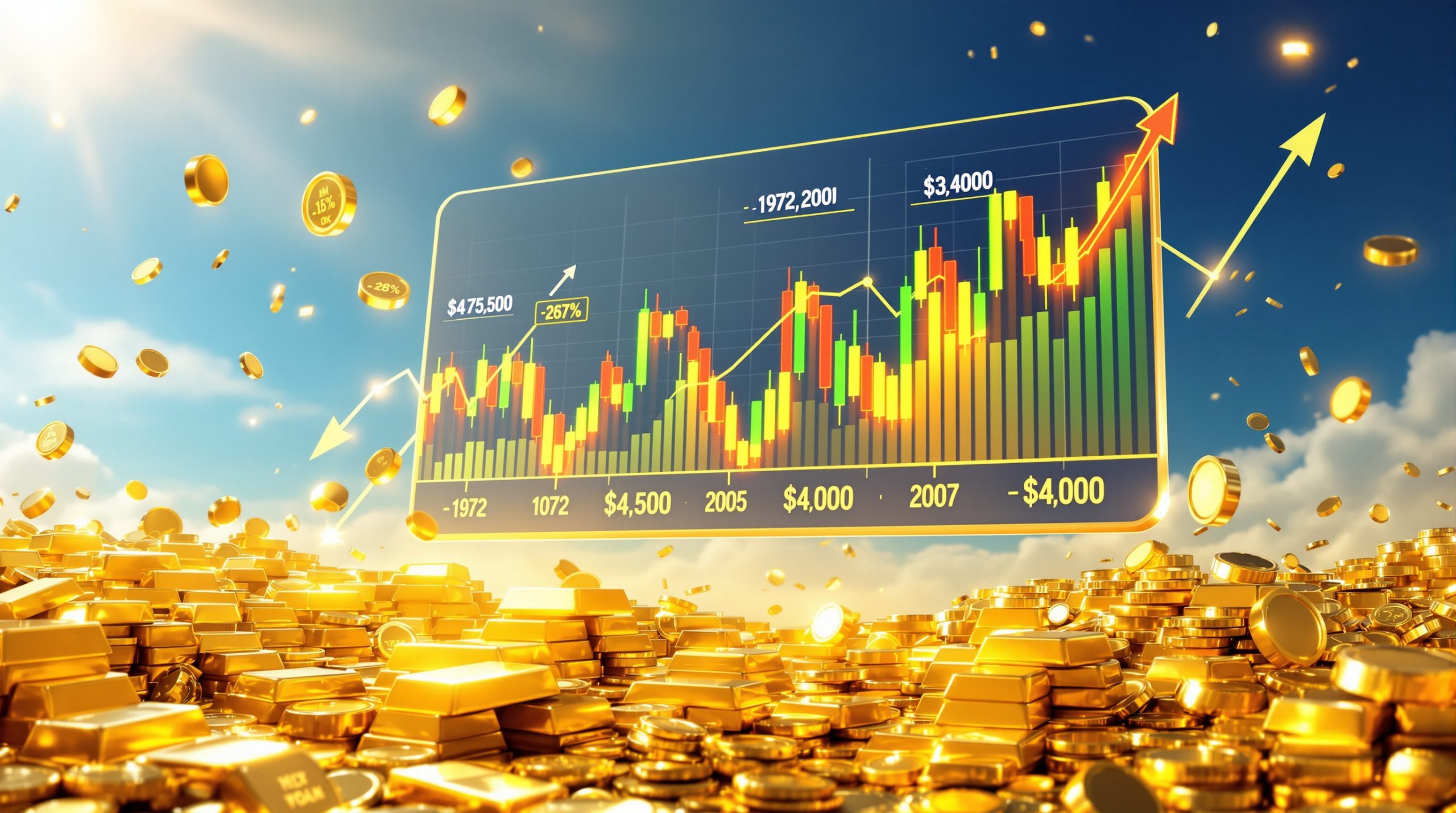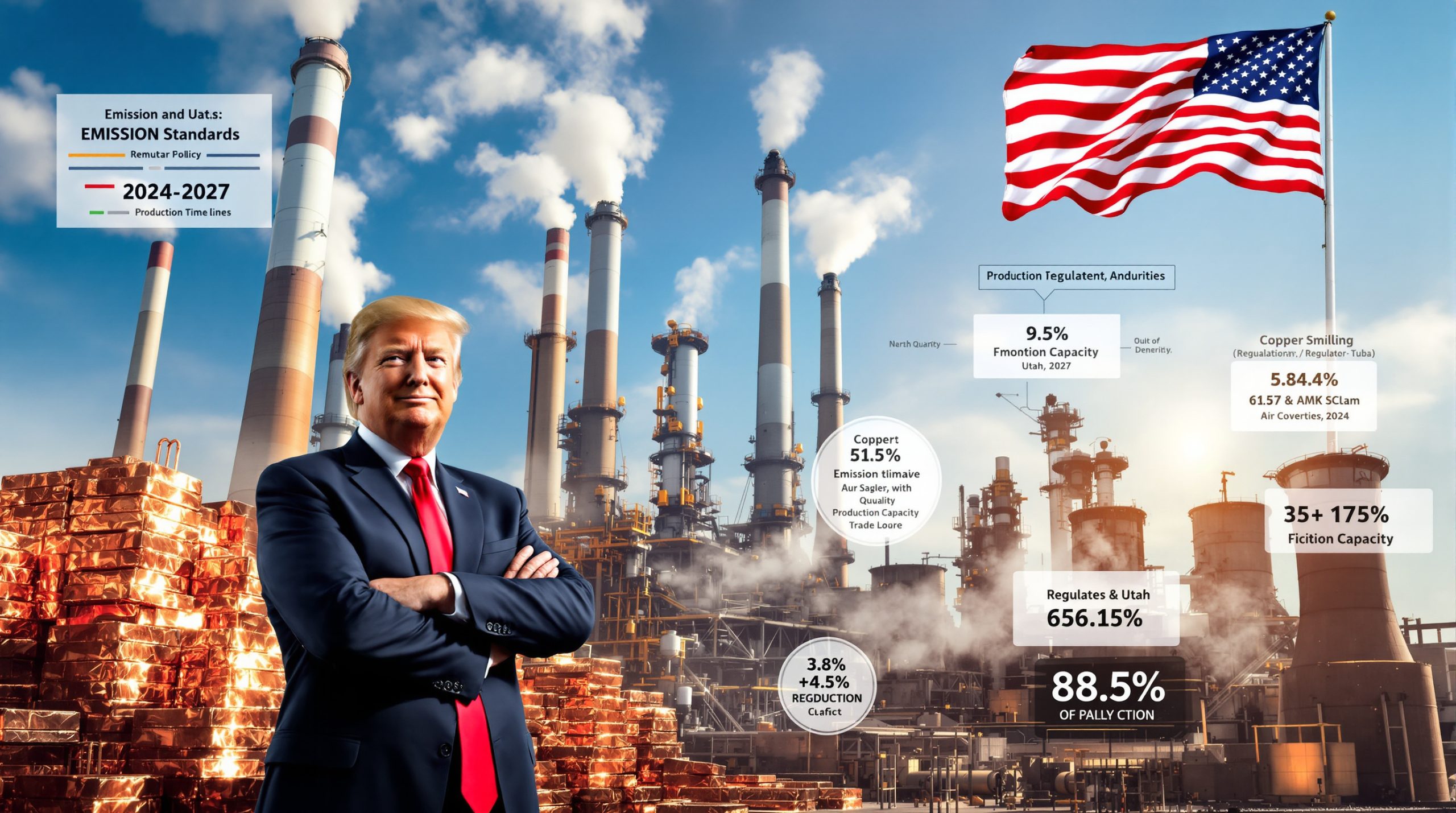Understanding the Historic Scale of Current Gold Investment Demand
Exchange-traded funds focused on precious metals are experiencing unprecedented capital allocation throughout 2025, with projections indicating $108 billion in annualised inflows based on year-to-date performance. This surge represents the most substantial annual ETF demand for gold heading for record-breaking inflows in the modern investment era, surpassing all previous peak years by significant margins.
The broader investment landscape reveals a remarkable convergence of asset class strength, with multiple categories simultaneously attracting record-breaking capital flows. Cash funds are positioned to capture $1.1 trillion in inflows, marking their second-largest annual intake in history. Equity funds are tracking toward $693 billion, representing the third-highest accumulation ever recorded.
Investment-grade bonds are achieving unprecedented demand at $415 billion, establishing new benchmarks for fixed-income allocation. Furthermore, this historic price surge continues to reshape traditional investment strategies across multiple asset classes.
Asset Class Inflow Projections for 2025
| Investment Category | Projected Annual Inflows | Historical Position |
|---|---|---|
| Cash Funds | $1.1 trillion | 2nd highest ever |
| Equity Funds | $693 billion | 3rd highest ever |
| Investment-Grade Bonds | $415 billion | Record high |
| Gold ETFs/Funds | $108 billion | Record high |
Breaking Down the Investment Flow Composition
Multiple investor categories are simultaneously increasing precious metals allocations, creating a convergence of demand sources rarely observed in commodities markets. Institutional investors, pension funds, and retail participants are all contributing to this capital influx through different investment vehicles and methodologies.
The current inflow pattern distinguishes itself from historical gold rallies because it encompasses both traditional safe-haven purchasing and strategic portfolio diversification across various investor types. Unlike previous cycles driven by singular factors, the 2025 gold market surge reflects multiple independent motivations operating concurrently.
Key demand contributors include:
- Institutional portfolio rebalancing initiatives
- Strategic asset allocation model updates
- Retail investor diversification strategies
- Sovereign wealth fund reserve adjustments
Market Conditions Driving Record Gold Investment Flows
Traditional asset class relationships have experienced significant disruption throughout 2025, with bonds, equities, and gold moving independently rather than following established correlation patterns. This breakdown has prompted investors to reconsider fundamental portfolio construction methodologies and risk management approaches across all asset categories.
Goldman Sachs Group macro trading professionals have observed that historical correlations between bonds, equities, and gold have been fundamentally altered, describing the current environment as exhibiting post-modern market characteristics. This assessment reflects the unprecedented nature of simultaneous strength across traditionally divergent asset classes.
Correlation Breakdown Creating New Investment Paradigms
Several interconnected factors are contributing to the disruption of traditional market relationships:
- Artificial Intelligence Investment Surge: Technology sector spending is creating equity market dynamics independent of broader economic fundamentals
- Federal Reserve Policy Uncertainty: Unclear interest rate trajectories are affecting traditional bond-equity relationships
- Geopolitical Risk Premiums: International tensions are creating asset-specific pricing mechanisms
- Trade Policy Volatility: Unpredictable international trade relationships are influencing currency and commodity markets
Economic Data Vacuum Amplifying Investment Uncertainty
Government operational disruptions have created significant information gaps in economic reporting, forcing market participants to rely more heavily on alternative indicators and safe-haven assets for portfolio stability. This data scarcity has substantially increased gold's appeal as a hedge against unknown economic conditions and policy outcomes.
The combination of artificial intelligence spending momentum, solid earnings performance, and stable economic fundamentals has enabled stocks to reach record levels while bonds and gold simultaneously strengthen. This unusual market behaviour reflects the breakdown of traditional asset allocation models.
Performance Analysis of Different Gold Investment Vehicles
Gold-backed exchange-traded funds have demonstrated their strongest performance characteristics since 2022, achieving eleven consecutive months of positive net flows that create sustained upward pressure on underlying precious metals demand. These investment vehicles provide both institutional and retail participants with liquid exposure to gold price movements without the complexities of physical storage requirements.
Current market data indicates gold futures trading at $4,148.7 per ounce with a 0.11% daily increase, while micro gold futures are positioned at $4,150.2 per ounce showing a 0.17% gain. These price levels reflect the sustained demand pressure from continuous ETF inflows and broader investment interest.
What's Driving ETF Demand to Multi-Year Performance Peaks?
Record weekly inflows have characterised recent gold fund performance, with several key indicators demonstrating unprecedented strength:
- Eleven consecutive months of positive inflows
- Highest weekly inflow volumes recorded in over two years
- Increased average holding periods among retail investor categories
- Growing institutional allocation percentages across portfolio mandates
The sustained nature of these inflows distinguishes the current cycle from previous periods of gold investment interest, suggesting deeper structural changes in investor behaviour rather than temporary market positioning adjustments.
Central Bank Accumulation Supporting Fundamental Demand
Sovereign gold acquisition programmes continue providing fundamental demand support, with central banking institutions worldwide maintaining consistent purchase strategies throughout 2025. These institutional buyers contribute to price stability mechanisms while reducing available supply quantities for private market participants.
Central bank demand represents a structural component of the precious metals market, providing a foundation of consistent purchasing that supports price floors during periods of private investor uncertainty or profit-taking activities.
Price Level Projections from Major Financial Institutions
Leading investment banks have established increasingly bullish price forecasts based on current inflow trends and evolving macroeconomic conditions, with several major institutions projecting continued upward momentum extending through 2025 and into subsequent years.
JPMorgan's analysis indicates potential gold prices reaching $5,055 per ounce by Q4 2026, with longer-term projections extending to $6,000 per ounce by 2028. These targets reflect the bank's assessment of sustained demand fundamentals and evolving market structure dynamics.
Short-Term Price Targets Reflecting Investment Momentum
Major Financial Institution Gold Price Projections
| Institution | Q4 2025 Target | 2026 Target | Long-Term Outlook |
|---|---|---|---|
| JPMorgan | $4,200/oz | $5,055/oz | $6,000 by 2028 |
| Goldman Sachs | $4,000/oz | $4,900/oz | Continued strength |
| Bank of America | $3,800/oz | $4,500/oz | Structural demand growth |
Historical Context for Current Price Movement Velocity
The acceleration from approximately $3,500 to over $4,000 per ounce has occurred more rapidly than comparable periods in previous gold rallies, indicating stronger underlying demand fundamentals and reduced seller resistance at elevated price levels. This velocity suggests institutional conviction rather than speculative positioning.
The speed of price appreciation reflects the convergence of multiple demand drivers operating simultaneously, creating sustained upward pressure that differs qualitatively from inflation-driven or crisis-motivated gold purchasing patterns observed in historical cycles. In addition, this gold prices analysis demonstrates the unique characteristics of the current rally.
Geopolitical Factors Influencing Investment Demand
International trade policy uncertainty has emerged as a central factor driving precious metals demand throughout 2025, with unpredictable relationships between major trading partners creating safe-haven premiums for assets independent of specific national economic performance.
The debate surrounding Federal Reserve interest rate policies, combined with government operational disruptions affecting economic data availability, has further complicated traditional investment decision-making processes. These factors have increased investor preference for assets providing portfolio stability during periods of elevated uncertainty.
Trade Policy Uncertainty Creating Safe-Haven Premiums
Fluctuating international trade relationships have prompted both institutional and individual investors to increase allocations to assets that maintain value independent of specific bilateral economic arrangements. Gold serves as a primary beneficiary of this diversification trend due to its global recognition and liquidity characteristics.
Currency Diversification Trends Supporting Precious Metals
Concerns regarding dollar-denominated asset concentration have motivated both institutional investors and sovereign entities to increase non-dollar reserve holdings, with gold functioning as a principal alternative reserve asset. This trend supports fundamental demand beyond traditional safe-haven purchasing patterns.
"Current geopolitical conditions are creating multiple, simultaneous demand drivers for precious metals rather than the single-factor motivations typical of previous rally periods."
Comparing Current Inflows to Historical Gold Investment Cycles
The $108 billion projected annual ETF inflows represent the highest institutional demand for gold investment vehicles in modern market history, surpassing previous peak periods by substantial margins. This level of sustained capital allocation indicates fundamental changes in investor attitudes toward precious metals portfolio allocation.
Unlike previous gold bull markets driven primarily by inflation concerns or currency debasement fears, the current investment surge encompasses multiple simultaneous drivers creating broader-based institutional demand across different investor categories and geographic regions.
Distinguishing 2025's Investment Pattern from Previous Market Cycles
Unique characteristics of the current gold investment environment:
- Technology sector growth occurring simultaneously with precious metals demand increases
- Concurrent equity and gold market strength challenging traditional portfolio diversification theory
- Western institutional participation at levels typically associated with crisis-driven periods
- Sustained central bank purchasing despite historically elevated price levels
Volume and Velocity Metrics Establishing New Benchmarks
Weekly and monthly inflow measurements have established new records for sustained capital allocation to gold investment vehicles, indicating investor conviction extending beyond temporary market positioning or short-term hedging strategies.
The consistency of inflow patterns over eleven consecutive months demonstrates institutional commitment to precious metals exposure as a portfolio component rather than tactical trading positions responding to specific market events. However, this gold price forecast 2025 suggests continued momentum despite periodic volatility.
Emerging Investment Strategies Around Gold Positioning
Investment advisory professionals are recommending higher gold allocation percentages than traditional portfolio construction models suggest, reflecting the changed correlation dynamics and increased macroeconomic uncertainty characterising current market conditions.
This shift represents a fundamental reassessment of gold's role within diversified portfolios, moving beyond traditional crisis-hedge positioning toward strategic core allocation methodologies that account for altered asset class relationships.
Portfolio Diversification Beyond Traditional Allocation Models
Professional portfolio managers are reassessing optimal precious metals allocation percentages based on documented correlation breakdowns affecting conventional diversification benefits. These adjustments reflect empirical evidence of changed market structure rather than theoretical portfolio optimisation.
Tactical vs. Strategic Gold Investment Positioning
Market participants are increasingly implementing dual-purpose gold positioning strategies, utilising precious metals exposure for both short-term volatility hedging and long-term portfolio stability objectives. This approach creates sustained demand across different investment time horizons.
Strategic positioning considerations include:
- Core portfolio allocation adjustments for correlation breakdown
- Tactical hedging against policy uncertainty
- Long-term purchasing power preservation strategies
- Geographic and currency diversification objectives
Risk Factors That Could Impact Continued Gold Investment Flows
Federal Reserve policy decisions regarding interest rate trajectories represent the primary risk factor for continued gold investment momentum, as higher rates increase the opportunity cost of holding non-yielding precious metals relative to income-producing alternatives.
However, current economic conditions and policy uncertainty suggest continued accommodative monetary policies are likely, reducing the probability of significant interest rate increases that would materially impact gold's relative investment attractiveness.
Interest Rate Policy Changes Affecting Investment Opportunity Costs
Traditional economic theory indicates that rising interest rates reduce gold's appeal by increasing returns available from alternative investments. However, the current environment's multiple demand drivers may provide greater resistance to rate-driven outflows than historical patterns suggest.
Market Correlation Normalisation Scenarios
If traditional asset class relationships return to historical correlation patterns, some current gold demand might shift toward conventional portfolio allocations. However, structural economic changes may prevent complete reversion to previous market relationship patterns.
Potential risk scenarios include:
- Federal Reserve aggressive rate increase cycles
- Resolution of major geopolitical uncertainties
- Traditional asset correlation pattern restoration
- Alternative safe-haven asset development
Investment Positioning Strategies for Continued Gold Strength
Current market conditions suggest gold's portfolio role may be evolving from tactical hedge positioning toward strategic core holding status, requiring reassessment of traditional allocation models and investment implementation methodologies.
Professional investment managers are evaluating optimal precious metals allocation percentages that account for documented correlation breakdowns and structural market changes affecting diversification effectiveness across asset classes. Furthermore, understanding the gold stock market guide can help investors navigate these changing relationships.
Allocation Sizing Considerations for Different Investor Categories
Investment vehicle options for gold exposure:
- Physical precious metals holdings for direct ownership
- Exchange-traded funds providing liquid market exposure
- Mining equity positions for leveraged price participation
- Futures contracts for sophisticated tactical positioning
Each implementation method offers different risk-return characteristics, liquidity profiles, and tax implications that should align with specific investor objectives and constraints.
Implementation Methods for Precious Metals Exposure
The selection of appropriate gold investment vehicles depends on individual investor circumstances, including portfolio size, liquidity requirements, tax considerations, and risk tolerance parameters. Professional guidance can help optimise implementation strategies for different investor categories.
"The convergence of multiple demand drivers suggests gold's traditional portfolio role may be experiencing permanent structural changes requiring updated allocation methodologies."
Disclaimer: This analysis is for educational purposes only and does not constitute investment advice. Gold investments carry risks including price volatility and market uncertainty. Investors should conduct independent research and consult financial professionals before making investment decisions. Past performance does not guarantee future results.
Market Outlook and Long-Term Considerations
The unprecedented convergence of institutional demand, correlation breakdown, and geopolitical uncertainty creates a unique investment environment that may support continued strength in gold heading for record-breaking inflows throughout 2025 and potentially into subsequent years.
Market participants should monitor Federal Reserve policy developments, geopolitical resolution progress, and traditional asset class correlation patterns for early indicators of potential changes to current investment demand dynamics affecting precious metals markets.
Key monitoring indicators for continued gold strength:
- ETF inflow consistency patterns
- Central bank purchasing programme maintenance
- Interest rate policy trajectory clarity
- Asset class correlation pattern stability
The sustainability of current investment flows will likely depend on the persistence of the multiple demand drivers currently supporting precious metals allocation increases across diverse investor categories and geographic regions.
Looking for Your Next Market Edge in Precious Metals?
Discovery Alert's proprietary Discovery IQ model delivers instant notifications on significant ASX mineral discoveries, including gold exploration breakthroughs that could capitalise on this unprecedented $108 billion investment surge. With gold ETFs experiencing record inflows and traditional market correlations breaking down, positioning yourself ahead of major discoveries becomes crucial for both short-term traders and long-term investors seeking to begin your 30-day free trial today.




